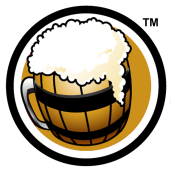Hops
|
Amount
|
Variety
|
Cost
|
Type
|
AA
|
Use
|
Time
|
IBU
|
Bill %
|
|
0.25 oz |
Magnum0.25 oz Magnum Hops |
|
Pellet |
15 |
Boil
|
60 min |
14.6 |
14.3% |
|
0.75 oz |
Mount Hood0.75 oz Mount Hood Hops |
|
Pellet |
4.8 |
Boil
|
30 min |
10.77 |
42.9% |
|
0.75 oz |
Willamette0.75 oz Willamette Hops |
|
Pellet |
8.6 |
Boil
|
15 min |
12.46 |
42.9% |
|
1.75 oz
/ $ 0.00
|
Hops Summary
|
Amount
|
Variety
|
Cost
|
IBU
|
Bill %
|
|
0.25 oz |
Magnum (Pellet) 0.24999999942814 oz Magnum (Pellet) Hops |
|
14.6 |
14.3% |
|
0.75 oz |
Mount Hood (Pellet) 0.74999999828443 oz Mount Hood (Pellet) Hops |
|
10.77 |
42.9% |
|
0.75 oz |
Willamette (Pellet) 0.74999999828443 oz Willamette (Pellet) Hops |
|
12.46 |
42.9% |
|
1.75 oz
/ $ 0.00
|
Mash Guidelines
|
Amount
|
Description
|
Type
|
Start Temp
|
Target Temp
|
Time
|
|
4.38 gal |
Single Infusion |
Infusion |
-- |
152 °F |
90 min |
|
4.83 gal |
Batch Sparge |
Sparge |
-- |
170 °F |
5 min |
Starting Mash Thickness:
1.5 qt/lb
|
Target Water Profile
Balanced Profile
| Ca+2 |
Mg+2 |
Na+ |
Cl- |
SO4-2 |
HCO3- |
|
80 |
5 |
25 |
75 |
80 |
100 |
Rice Hulls:
Add 1lb for every 5lbs for grain to help with heat distribution.
Roasted Barley:
Hot steep and cold steep with short boil.
Milled separately and finely ground.
1lb grain to 2qts water.
Mix with cold water and leave at room temperature for a full day.
Add to last 10 min of boil.
Crystal Malt:
Add after mash-out, during vorlauf.
Chocolate Malt:
Add after mash-out, during vorlauf.
Raise temperature slowly to 61◦F over last 1/3 of fermentation.
Condition at least 4 weeks. |
|
Mash Chemistry and Brewing Water Calculator
|
Notes
Overall Impression:
A malty but hoppy beer frequently with chocolate and caramel flavors. The hop flavor and aroma complements and enhances the malt rather than clashing with it.
Aroma:
Moderate malty-sweet to malty-rich aroma with chocolate, caramel, nutty, and/or toasty qualities. Hop aroma is typically low to moderate, of almost any variety that complements the malt. Some interpretations of the style may feature a stronger hop aroma, an American or New World hop character (citrusy, fruity, tropical, etc.), and/or a fresh dry-hopped aroma (all are optional). Fruity esters are moderate to very low. The dark malt character is more robust than other brown ales, yet stops short of being overly porter-like. The malt and hops are generally balanced.
Appearance:
Light to very dark brown color. Clear. Low to moderate off-white to light tan head.
Flavor:
Medium to moderately-high malty-sweet or malty-rich flavor with chocolate, caramel, nutty, and/or toasty malt complexity, with medium to medium-high bitterness. The medium to medium-dry finish provides an aftertaste having both malt and hops. Hop flavor can be light to moderate, and may optionally have a citrusy, fruity, or tropical character, although any hop flavor that complements the malt is acceptable. Very low to moderate fruity esters.
Mouthfeel:
Medium to medium-full body. More bitter versions may have a dry, resiny impression. Moderate to moderately-high carbonation.
Comments:
Most commercial American Browns are not as aggressive as the original homebrewed versions, and some modern craft-brewed examples. This style reflects the current commercial offerings typically marketed as American Brown Ales rather than the hoppier, stronger homebrew versions from the early days of homebrewing. These IPA-strength brown ales should be entered in the Specialty IPA as Brown IPAs.
History:
An American style from the modern craft beer era. Derived from English Brown Ales, but with more hops. Pete’s Wicked Ale was one of the first and best known examples, and inspired many imitations. Popular with homebrewers, where very hoppy versions were sometimes called Texas Brown Ales (this is now more appropriately a Brown IPA).
Characteristic Ingredients:
Well-modified pale malt, plus crystal and darker malts (typically chocolate). American hops are typical, but continental or New World hops can also be used.
Style Comparison:
More chocolate and caramel type flavors than American Pale or Amber Ales, typically with less prominent bitterness in the balance. Less bitterness, alcohol, and hop character than Brown IPAs. More bitter and generally hoppier than English Brown Ales, with a richer malt presence, usually higher alcohol, and American/New World hop character.
Vital Statistics:
OG: 1.045 – 1.060
FG: 1.010 – 1.016
IBUs: 20 – 30
SRM: 18 – 35
ABV: 4.3 – 6.2%
Commercial Examples:
Anchor Brekle’s Brown, Big Sky Moose Drool Brown Ale, Brooklyn Brown Ale, Bell’s Best Brown, Cigar City Maduro Brown Ale, Smuttynose Old Brown Dog Ale, Telluride Face Down Brown
Tags:
standard-strength, dark-color, top-fermented, north-America, craft-style, brown-ale-family, balanced, hoppy

Last Updated and Sharing

- Public: Yup, Shared
- Last Updated: 2019-10-29 21:13 UTC
For quick copying and pasting to a text based forum or email.
Click the Download as HTML file button below.
Recipe costs can be adjusted by changing the batch size. They won't be saved but will give you an idea of costs if your final yield was different.
|
Cost $ |
Cost % |
| Fermentables |
$ |
|
Steeping Grains
(Extract Only) |
$ |
|
| Hops |
$ |
|
| Yeast |
$ |
|
| Other |
$ |
|
| Cost Per Barrel |
$ 0.00 |
|
| Cost Per Pint |
$ 0.00 |
|
| Total Cost |
$ 0.00 |
|
Discussion about this recipe:
